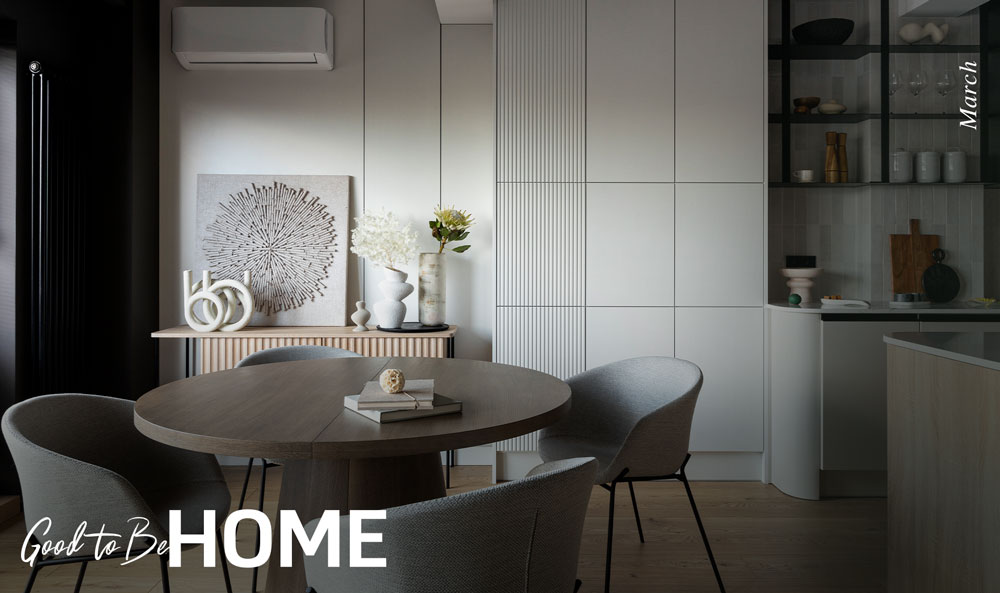In the world of interior design, trends are forever evolving, with one style quickly replacing or even morphing into another. Because of this constant ebb and flow, it’s often wiser to eschew what’s in vogue and opt for an enduring look that won’t likely fall out of fashion in a few months. However, this doesn’t necessarily mean following strict, overly traditional rules; crafting timeless interiors is more about striking a balance between classic elements and modern aesthetics. So whether you’re designing a new home or giving your current one a makeover, these tips can help you create spaces you’re sure to love for years to come.

One of the key principles of timeless decor is to use a neutral color palette in your paint and furnishings. Neutrals like white, beige, gray, and taupe provide a simple yet versatile backdrop that works with practically any style and decorative element. These colors lend a sense of serenity without visually dominating the space, allowing accent pieces in the room to take center stage. Simply select your preferred neutral walls and furniture, then inject pops of trendy colors with smaller accessories like throw pillows, rugs, and artwork, which you can easily swap out to refresh the look as your preferences and lifestyle change.
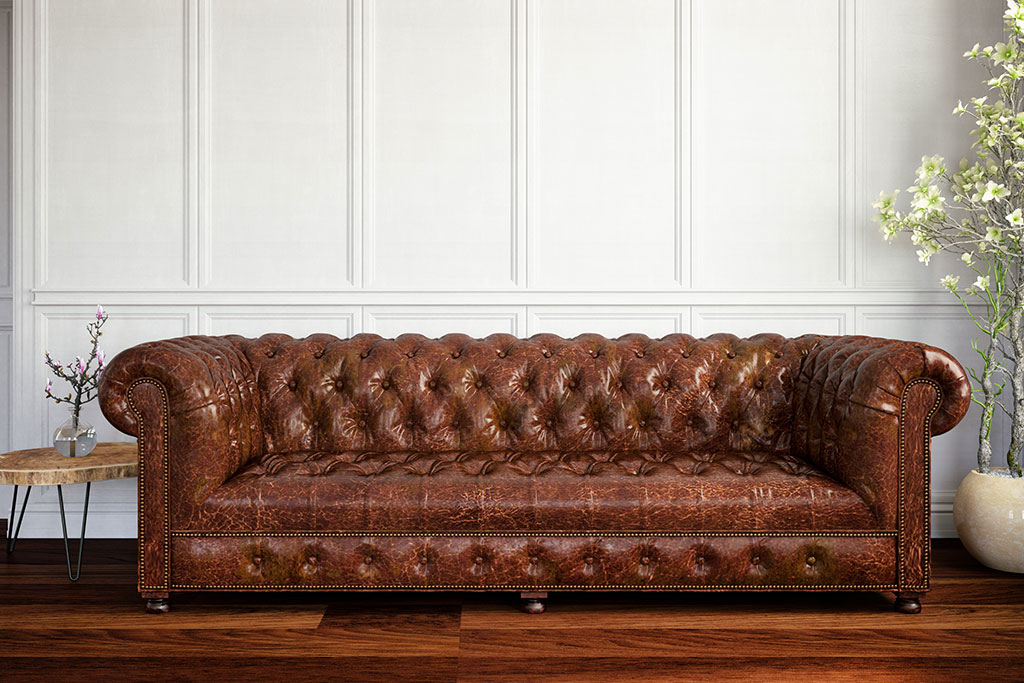
“Quality over quantity” is the mantra for timeless designs—in other words, invest in handcrafted, durable, and classic furniture rather than machine-made, mass-produced items. Ageless pieces like a chesterfield sofa, Eames lounge chair, and tulip table have stood the test of time and add a sense of luxury to any space. Though they might come with a heftier price tag, they’re often worth the cost since they’ll serve as versatile staples in your home, forming a foundation you can craft the rest of your design around.
When adding new items to a space, don’t feel like each one needs to match perfectly. For instance, a bedframe, nightstand, and dresser set can make your bedroom feel manufactured and less personal. Instead, go with pieces that complement each other while still standing on their own. Through mixing styles and eras, such as by pairing an antique dresser with a modern headboard, you can create a balanced space that feels more personal and creative and isn’t married to a specific time period—which could quickly date the room.
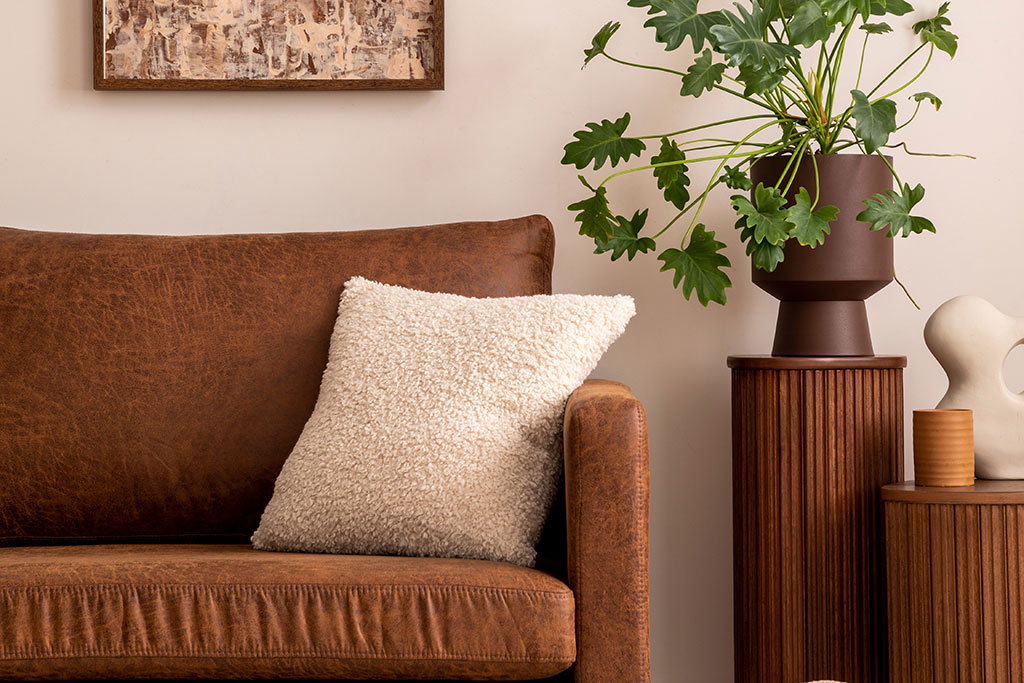
Bringing the outdoors inside is a surefire way to create timeless appeal within your home. Natural materials, including wood, stone, leather, and rattan, have been popular for decades because they add warmth, visual interest, and depth to interiors. By adding a leather accent chair, terra-cotta vase, terrazzo table, or rattan basket to your living room or bedroom, you can quickly elevate the design and make the entire space feel cozier and more complete.
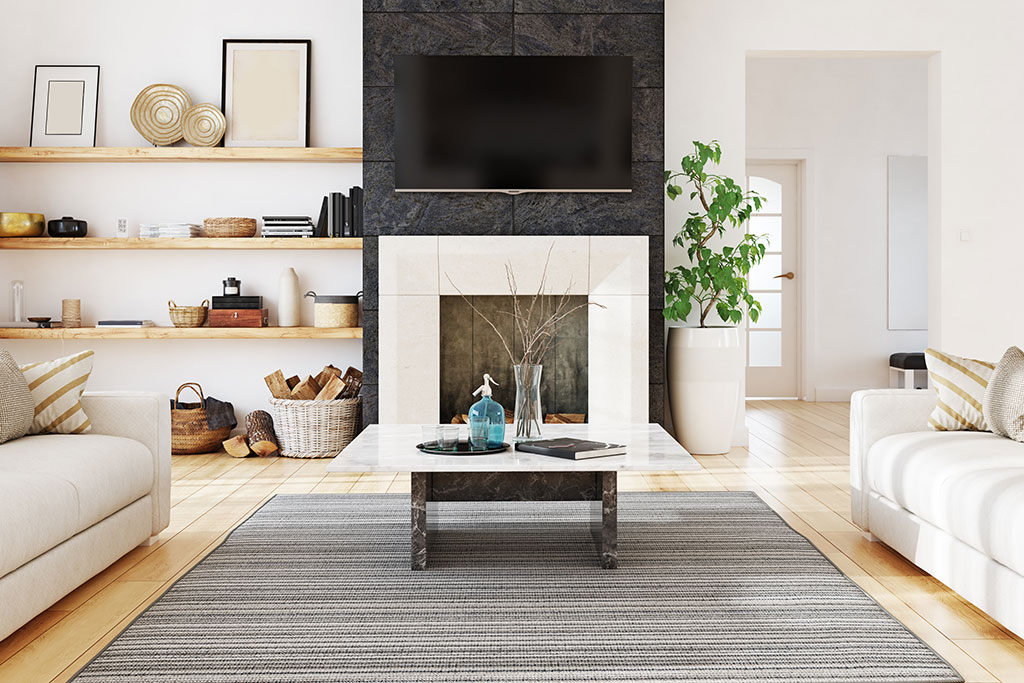
If you’ve ever walked into a room and felt that it was from another decade, it’s likely because it featured a motif that has since gone out of style. From chevron and animal print to hyperflorals, trending patterns come and go, but only a few remain classics. Basic geometric shapes, stripes, plaids, and botanicals, for example, are great choices when it comes to fabrics, wallpapers, and rugs. Since they’re not tied to a specific decade and are relatively simple, they have an ageless appeal that helps them work with a variety of design schemes and interior spaces. And when you carefully mix them, like when using botanical wallpaper and a striped rug in the same room, you add more texture and dimension to create a dynamic, everlasting look.
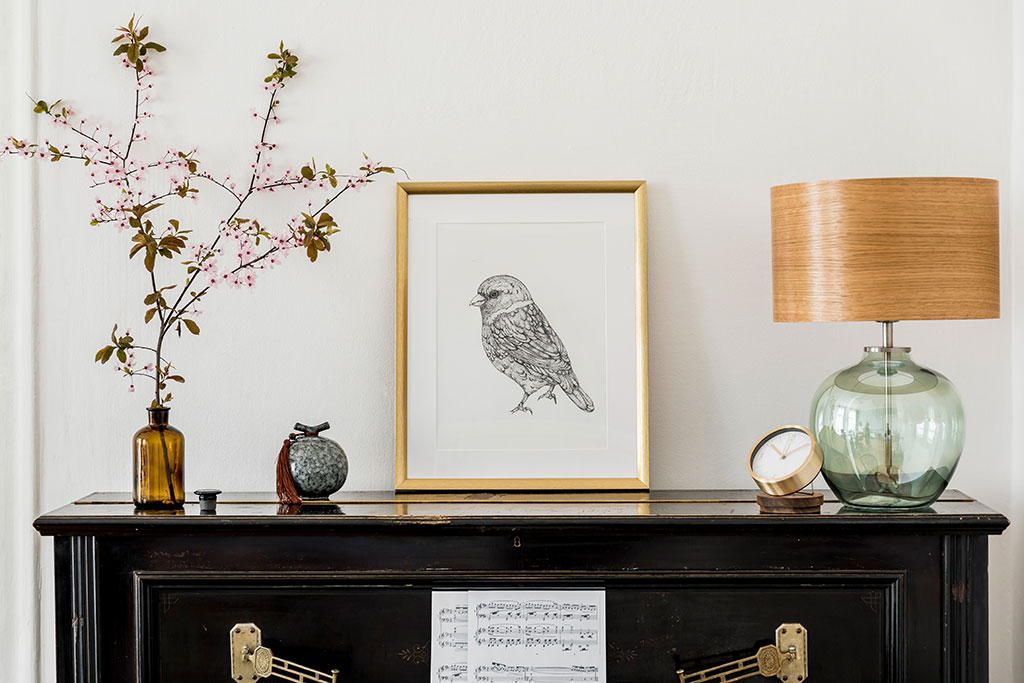
While maintaining a neutral and classic foundation is crucial to crafting lasting designs, it’s also important to infuse your unique personality and life experiences into your spaces. Consider showcasing cherished family photos, heirlooms, or mementos from your travels to imbue your space with a sense of history and authenticity. You can also find ways to make these elements more timeless, such as by hanging your family portrait in an antique gilded frame or placing a keepsake on top of a rattan box. When you do, they will seamlessly blend into your decor, allowing you to cherish them for years to come.
Timeless interior design is all about creating spaces that remain relevant throughout the years. It takes time to achieve a balanced and cohesive look, so don’t rush to curate the perfect collection of classic furniture and decor. Instead, enjoy the process, and watch as your home gradually blossoms into a realm of enduring elegance.
The journey to homeownership is an exciting one filled with dreams and possibilities. But before you embark on this adventure, there’s a critical step you must take first: determining how much you can spend. Your ability to comfortably manage your mortgage and associated expenses and maintain your financial well-being will largely depend on this number. Here are the biggest factors that may influence your home affordability and how to use them to shape your budget.

While there are no hard-and-fast numbers to refer to, as a general guideline, you can calculate the maximum amount you can spend on a home by multiplying your gross annual income by 2.5 or 3. For example, if you’re a dual-income household earning $150,000 annually, an affordable home price range would be $375,000 to $450,000. However, you may need to adjust this number up depending on your location since more expensive markets may require a higher multiplier.

The size of your down payment will significantly impact your affordability. A larger one (20 percent or more) will mean not only a reduced loan amount but also a potentially better interest rate since lenders will view you as a lower-risk borrower. Conversely, a down payment below 20 percent may necessitate mortgage insurance payments, which will vary based on how much you borrow. The annual cost can range from 0.2 to 2 percent of the loan amount for a conventional loan, 0.5 to 0.55 percent for a Federal Housing Administration (FHA) loan, and 0.35 percent for a US Department of Agriculture (USDA) loan. This is typically paid throughout the year, adding to your monthly expenses, so make sure to take it into account when assessing your budget.

Those with elevated credit scores typically enjoy lower interest rates and often receive approval for larger loan amounts. This is because lenders perceive them as lower-risk borrowers with a higher probability of repaying their loans. However, if your credit score falls in the lower range, obtaining favorable terms may prove challenging, potentially influencing the number of affordable homes you can explore.
That said, the parameters for acceptable creditworthiness will vary depending on the loan type. For instance, conventional loans tend to have strict lending guidelines, and to receive a favorable interest rate, you typically need a strong credit history and a FICO score of 740 or higher. On the other hand, government-backed loans, such as those from the FHA and Department of Veterans Affairs (VA), are designed to assist buyers who require more leniency in lending criteria, which can allow them to still get a better interest rate even with a weaker credit history or score. Check with your lender on the various programs available to help determine what you qualify for.

Another way a lender will measure your ability to repay your loan is by looking at your DTI—the percentage of your monthly debt payments divided by your gross monthly income. Lenders and underwriters will closely examine both these factors to verify that you can afford the home you’re purchasing. Though the ideal percentages may vary by lender, the average threshold relies on the 28/36 rule, meaning your monthly mortgage payment does not exceed 28 percent and your total debt 36 percent of your total income.

In addition to your interest rate, DTI, and down payment, your lender will scrutinize your LTV ratio. Typically expressed as a percentage, this number is derived by dividing the principal amount of your mortgage loan by the property’s value. A reduced LTV ratio can enhance your chances of securing a lower interest rate, influencing the approved loan amount.

Besides your fixed monthly expenses, there are several other factors to consider when assessing what you can reasonably and comfortably afford.
Property taxes
Tax rates fluctuate depending on location, so what might seem manageable based on your income could become challenging if property taxes turn out to be higher than you anticipated. Likewise, if they are lower than expected, your affordability may improve. Always verify your tax rate with the county assessor and inquire about any forthcoming property assessments that might alter your tax base, consequently impacting your purchasing power.
Emergency fund
Allocating resources to an emergency fund will give you a financial safety net for unforeseen costs like medical emergencies or unexpected home repairs. Establishing a financial cushion before setting your homebuying budget can shield you from possible financial hardships.
Buying a home is a huge investment, and it’s one you want to approach strategically. As you embark on the journey, consult with your real estate agent, who can assist you in locating homes that fit your affordability criteria to help you reach your homeownership goals.
Nothing says spring like fresh, local produce, but why spend money at the store when you can get it from your own backyard? With a few simple tips and a little bit of effort, you can cultivate your own vegetable garden, making it a snap to throw together simple salads that are as delicious as they are nutritious.
If you’re new to gardening, this guide can help you plan, plot, and grow your way to a crop yield robust enough to satisfy all your friends and family.
This lightly grilled salad incorporates fresh produce and a green goddess dressing that’s bursting with tangy goodness.
Accompanied by a delightful pepper-and-honey vinaigrette, this vibrant salad will bring the refreshing flavors of spring straight to your dining table.
Planting your own vegetable garden is a rewarding and sustainable way to put fresh, homegrown goodness on your dining table—and you don’t even need a green thumb to do so. Use the steps and tips in the following guide to help you get started on creating a robust crop of veggies.
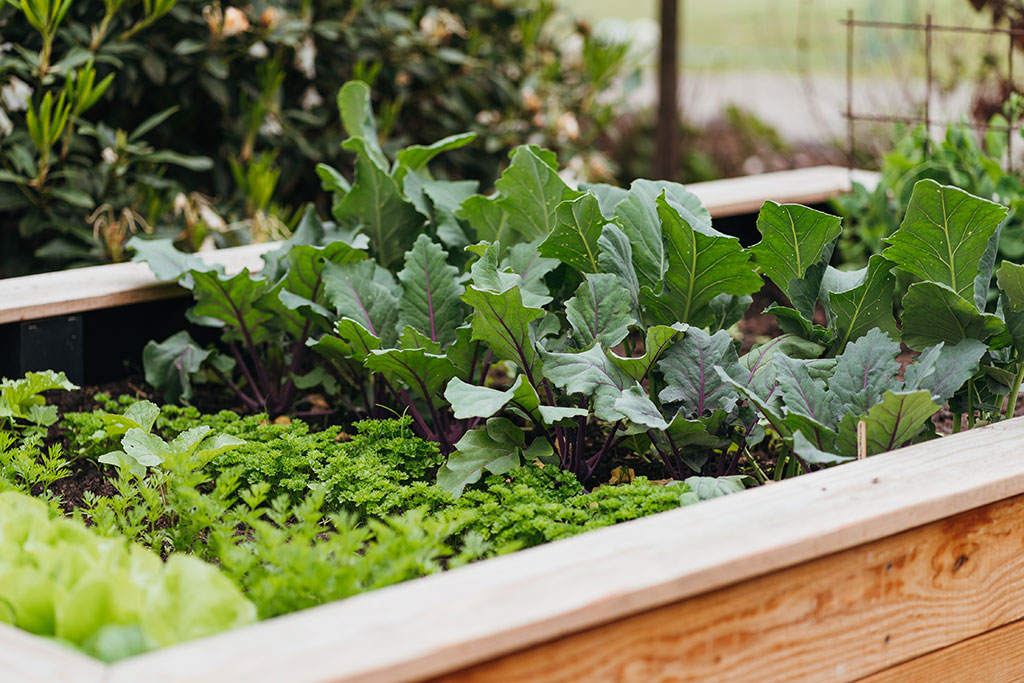
As you embark on your gardening journey, take care not to bite off more than you can chew. A common mistake novice gardeners make is diving into a complex garden before grasping the basics, which can lead to frustration. To avoid overextending yourself, choose up to five types of veggies only, opting for ones that are simple to grow, such as radishes, lettuce, kale, spinach, peas, or green beans. Then research their planting requirements, care needs, and crop yield to ensure you’re thoroughly prepared to begin.
One key factor to consider when deciding on your plants is whether the ones you’re interested in are compatible. For example, potatoes should not be planted close to cucumbers since they may compete for water and nutrients, hindering the growth of both plants. Meanwhile, peas are an excellent companion to eggplant due to the nitrogen they fix in the soil, which may help the eggplant to thrive. In addition, even with a small garden, try to have a variety of crops; biodiversity can act as a natural defense against pests and safeguard soil quality.
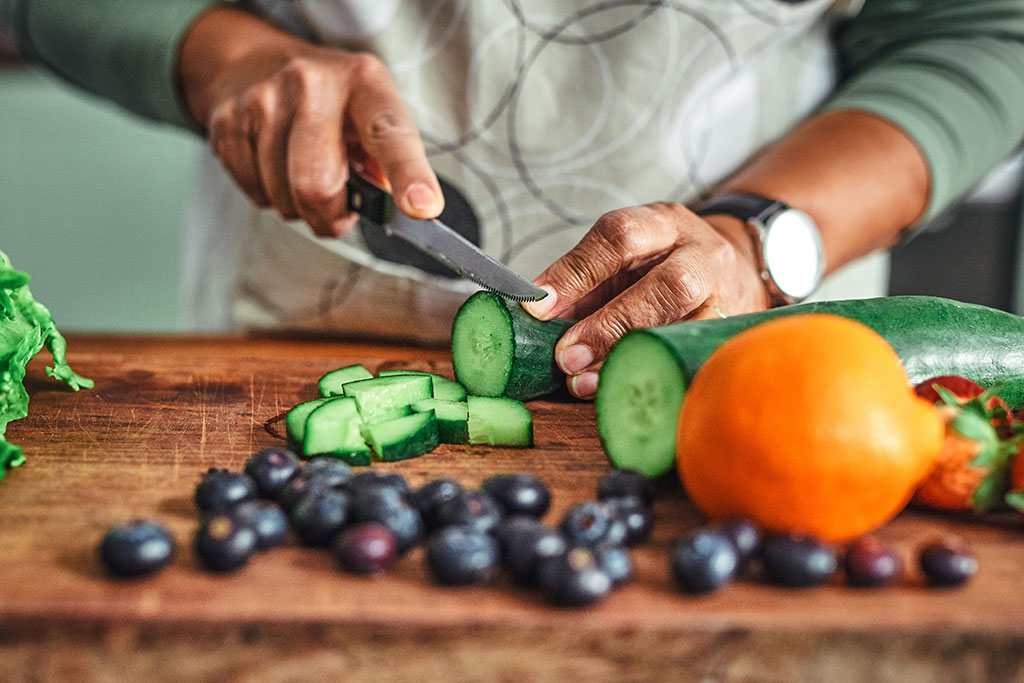
When planning your garden, be realistic about how much you need to plant. Some vegetables, including tomatoes, peppers, and squash, produce fruit throughout the growing season, so you’d need fewer seeds to meet your needs. Other vegetables, like carrots, radishes, and corn, only offer one harvest, requiring you to replant them for additional yields. Consider your family’s eating habits and whether you want to use all the produce yourself or have extra to freeze or share with others. This will help you determine how much to put in your garden.
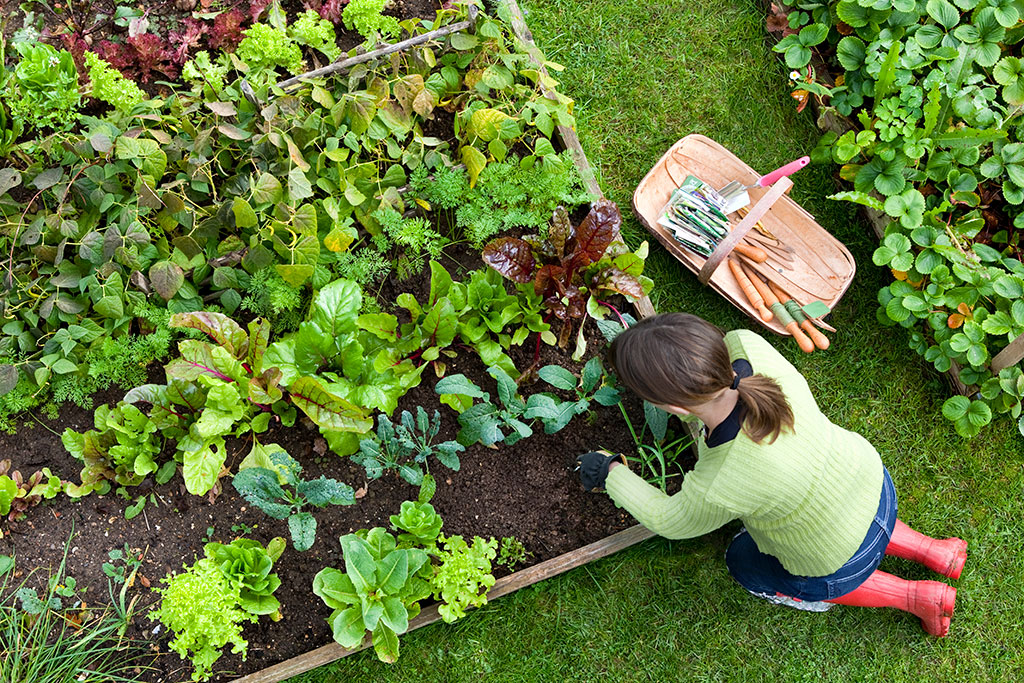
A 10-by-10-foot garden is an optimal size for beginners, though it will depend on what you want to grow. For instance, pole varieties of green beans and peas grow vertically, while potatoes and lettuce grow horizontally, so you’ll need to plan your garden carefully to ensure each has the space it needs to flourish. Also, select a location that provides optimal sunlight for your chosen plants. Veggies like squash, peppers, and tomatoes require a south-facing garden, which gets sunlight all day. Conversely, ones like leafy greens, carrots, and brussels sprouts would flourish more in a shady north-facing garden.
Not all seeds can be planted simultaneously since each may require different climate conditions to thrive; if planted too soon or too late, they will not result in a good harvest. Therefore, it’s essential to know what climate zone you live in. Consider consulting the Old Farmer’s Almanac website, which provides a comprehensive calendar for when to plant different vegetables along with a list of frost dates for your specific location.
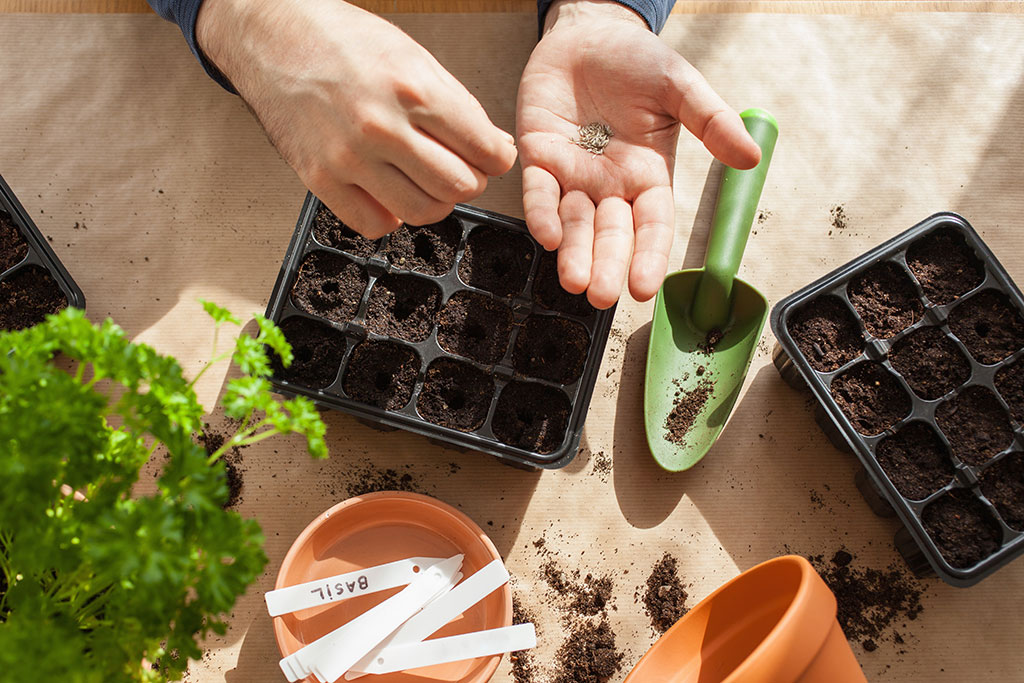
Because there are many varieties to choose from, it can be a challenge knowing which seeds to go with when first getting started. Some garden experts recommend that newbies use hybrid seeds since they are hearty and robust, but it will ultimately depend on your crop selections. Your local nursery, feed store, or farmers co-op can be a good source of information to help you learn which ones are best for your specific plans.
You’ll also want to verify that the seeds you pick are grown or sourced either locally or regionally since they are more likely to thrive in your area’s climate. Lastly, check the dates on the seed packets to ensure you are buying fresh ones; many can stay viable for several years, but others have a shorter shelf life. For example, cucumber, tomato, and melon seeds can last for five to six years, while ones for peas, peppers, and beans are best used within two to three years.

Always follow the planting instructions found on the seed packets, which will tell you what time of year to plant and how deep to sow the seeds. To safeguard your seedlings from fungal and mold growth and prepare them for adverse weather, make sure they receive proper airflow—just enough outside air movement where the leaves are slightly moving. If they don’t, consider placing a small, slow-speed oscillating fan nearby to improve the circulation in your garden. Then it’s just a matter of watering your plants per their instructions, watching your homegrown wonders flourish, and harvesting the delicious bounty they yield.
recipe by patterson watkins
photos by shana smith
The idea of grilling leafy greens may sound odd, but doing so lends a surprising depth of earthy flavor that perfectly complements the homemade herby dressing and hodgepodge of tasty toppings.
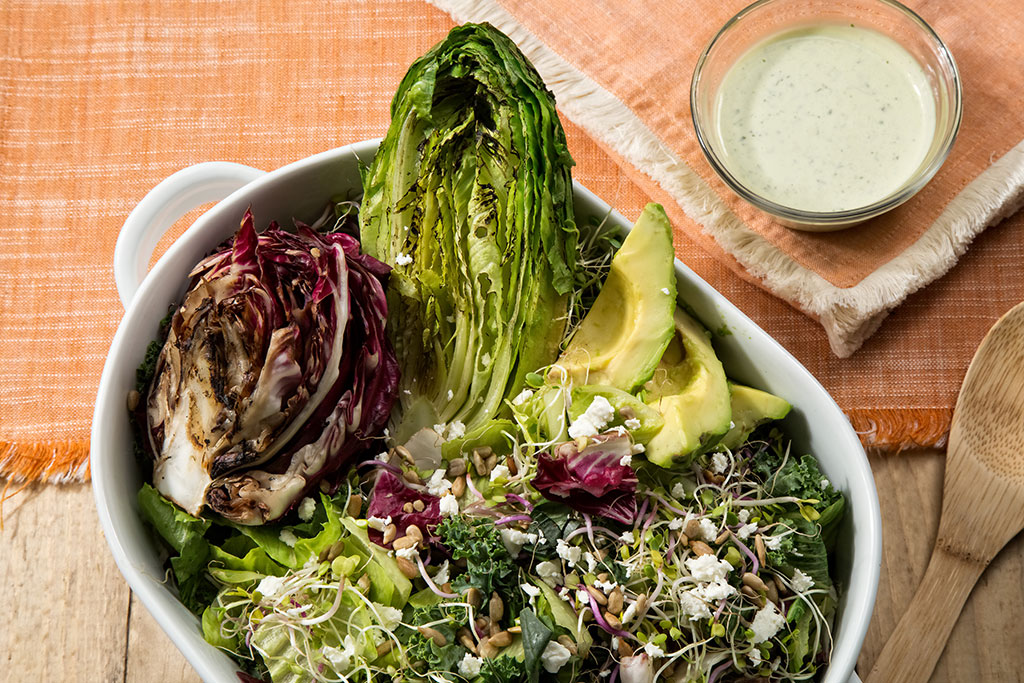
Serves 4

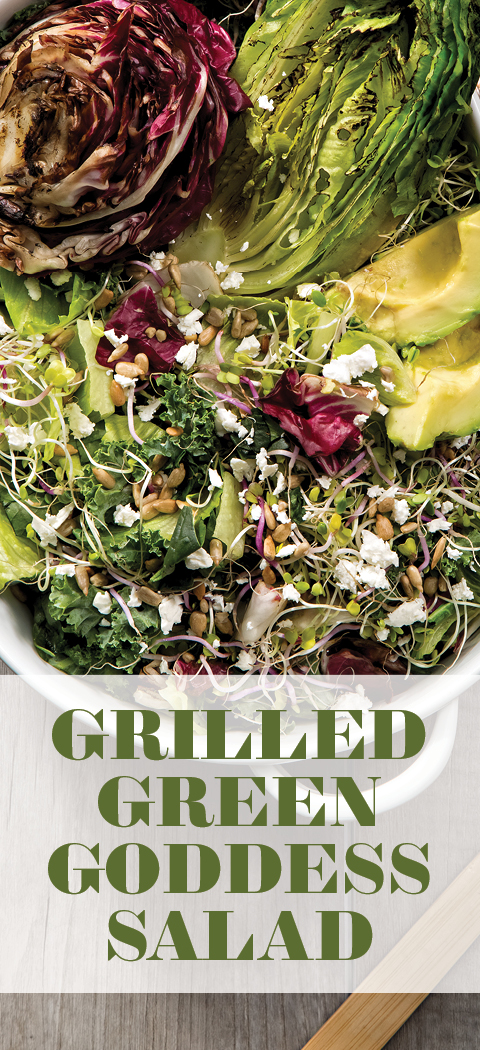
recipe by patterson watkins
photos by shana smith
For a salad that’s as colorful as it is delicious, blanch an assortment of fresh asparagus, peas, and radishes, then bring them together with mint, pea shoots, and a peppery vinaigrette kissed with honey.
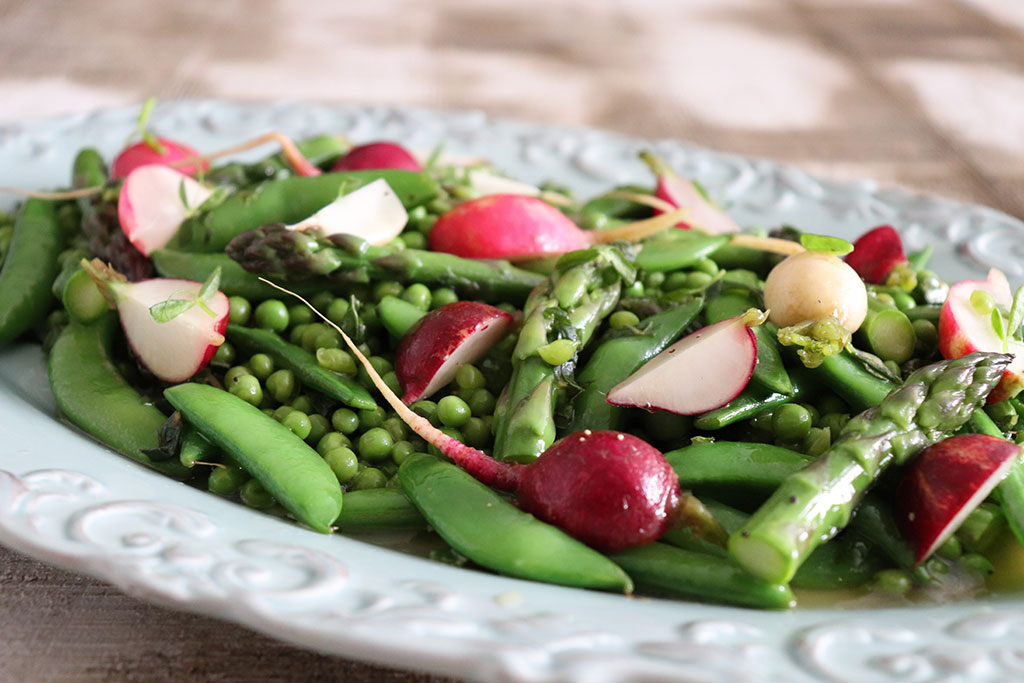
Serves 4
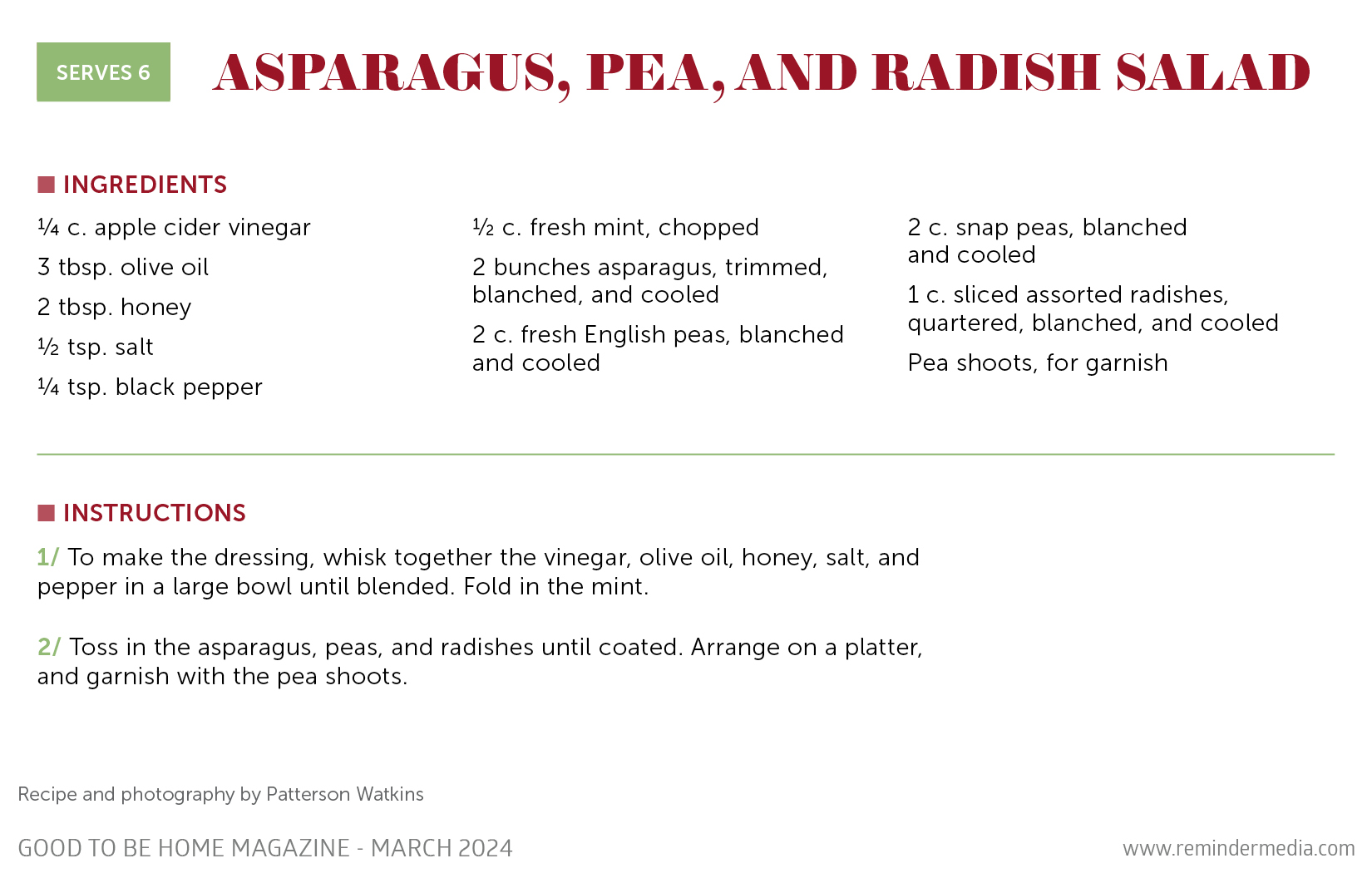
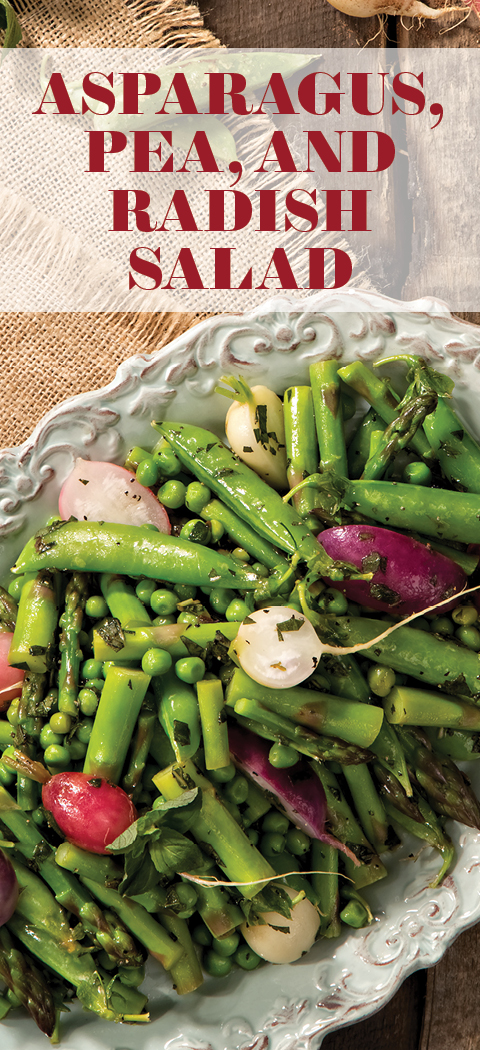
Do you dream of having ample storage but lack extensive DIY skills or a big budget? If you’re strapped on either, take heart—you can turn any closet in your home into a beautiful, organized space without spending much by following these simple tips.

Perhaps the best way to dramatically increase a closet’s storage capacity is to simply utilize every inch of its available space. For instance, you could hang cloth drawer organizers from the rod for items like socks or towels and install self-stick hooks on an empty wall to hold hats, robes, or brooms. For smaller, lightweight objects like scarves and tools, consider putting up a pegboard, which you can tailor to your needs with various hooks and bins. To get the most out of your shelves, attach dividers to neatly contain folded shirts or dish towels; if you need help reaching them, you could get a folding step stool or grabber that tucks neatly out of the way. And don’t forget about the inside of your closet door—it’s a perfect spot for a placing a pocket organizer for sneakers, kitchen gadgets, or other accessories.

To get a built-in look for a closet at a fraction of the cost, try replacing its rods or wire racks with an easy-to-assemble bookcase with adjustable shelves, which will give you the freedom to rearrange them as needed. You can then use acrylic risers to showcase items like perfumes or spices and shelf dividers, baskets, or storage cubes to stash clothing or craft supplies.
If you still need a space to hang clothing, you could remove a few shelves and install a tension rod or place one between two bookshelves. The beauty of this solution is that you don’t have to drill into your walls and risk damaging wires or pipes behind them. If you don’t want to change anything about your closet’s current setup, you could also simply add cubbies with bins and baskets for extra storage. For an added touch, place labels on your containers or hang labeled closet dividers on the rod to indicate where everything should go.
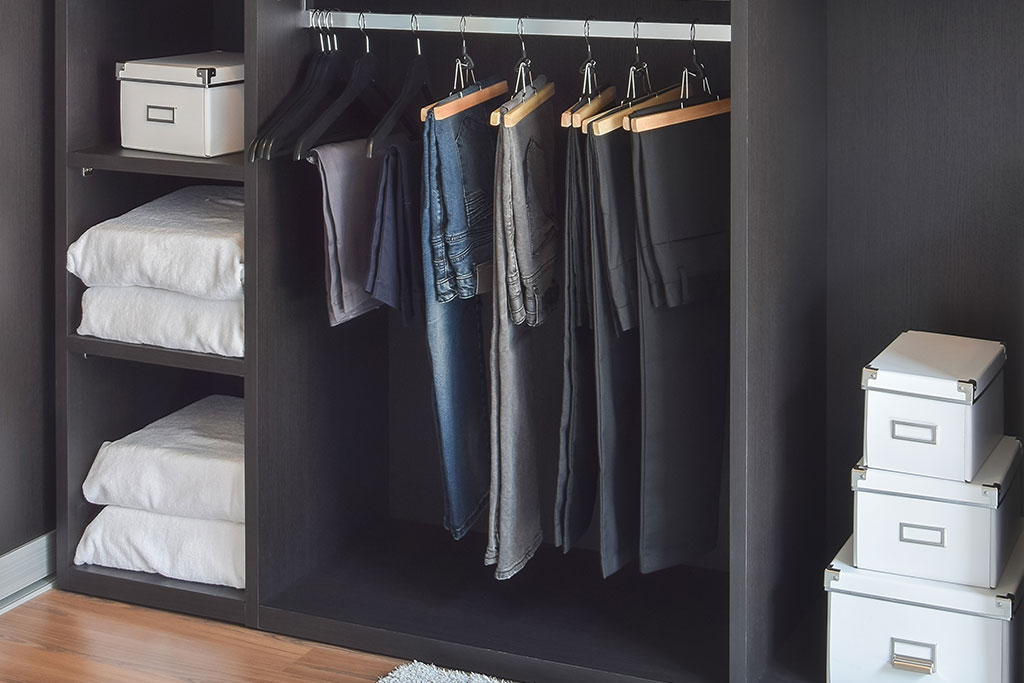
A quick way to get more space in a hall or bedroom closet bursting with clothing is to change your hangers. You could make a simple swap to slim, nonslip ones or capitalize on your closet’s vertical space with connector hooks or organizers that will let you chain several hangers together; there are even ones specifically designed for pants and skirts. These can also be a useful way to organize various types of clothing or outfits together.
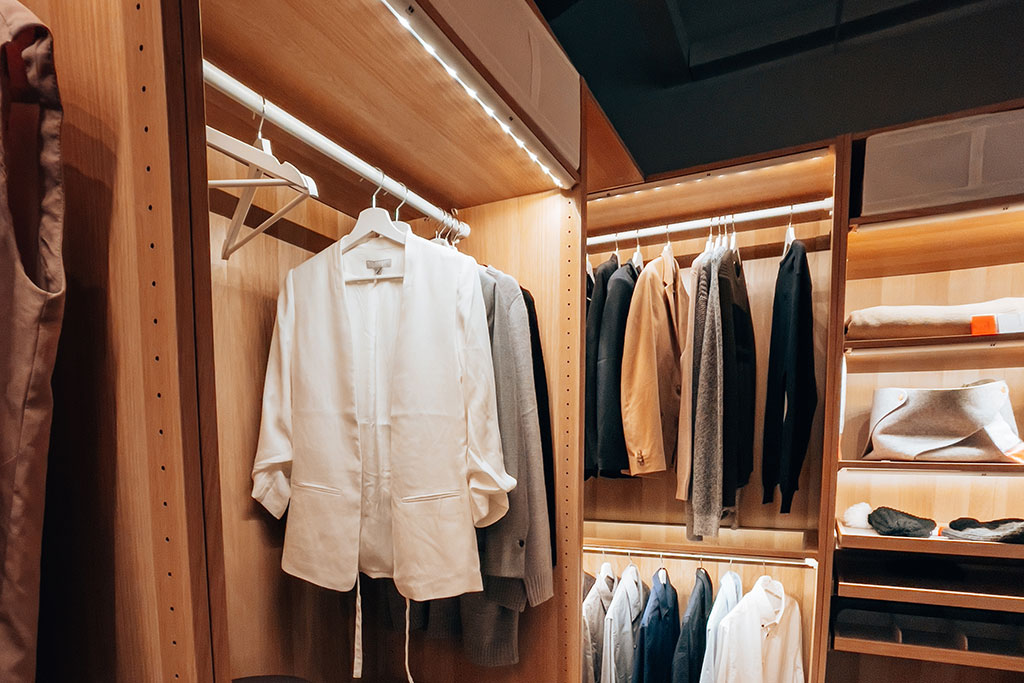
Adding lighting can help you better view a closet’s offerings and add some glam, especially if it currently lacks a light fixture. There are plenty of battery-operated varieties you can try if you don’t want to wire one yourself or hire an electrician; as a bonus, many also come with motion sensors to switch on automatically. You could add a ceiling light or, for a dramatic look, opt for strip or puck lights to spotlight specific belongings you’d like to draw attention to. Some versions even come with self-stick adhesive, making them easy to install.

To truly make a closet your own, incorporate some accessories. For instance, Ursula Carmona of Home Made by Carmona chose a whimsical bird-themed wallpaper for her walk-in closet, adding framed prints to the shelves for an extra touch. Meanwhile, fellow blogger Diana Elizabeth Steffen installed black-spotted removable wallpaper in hers and swapped out the original white rods for shiny chrome ones. Do whatever suits your style and closet space, whether that means painting, stenciling, or laying down a cozy area rug. It’s all up to you!
There are endless options for customizing a closet—just google “closet makeover” or search the topic on Pinterest, Instagram, or TikTok to see all sorts of decorating and organizing ideas you can experiment with to perfect yours.
